Opinion & Analysis
Imagine what drivers will look like in 30 years
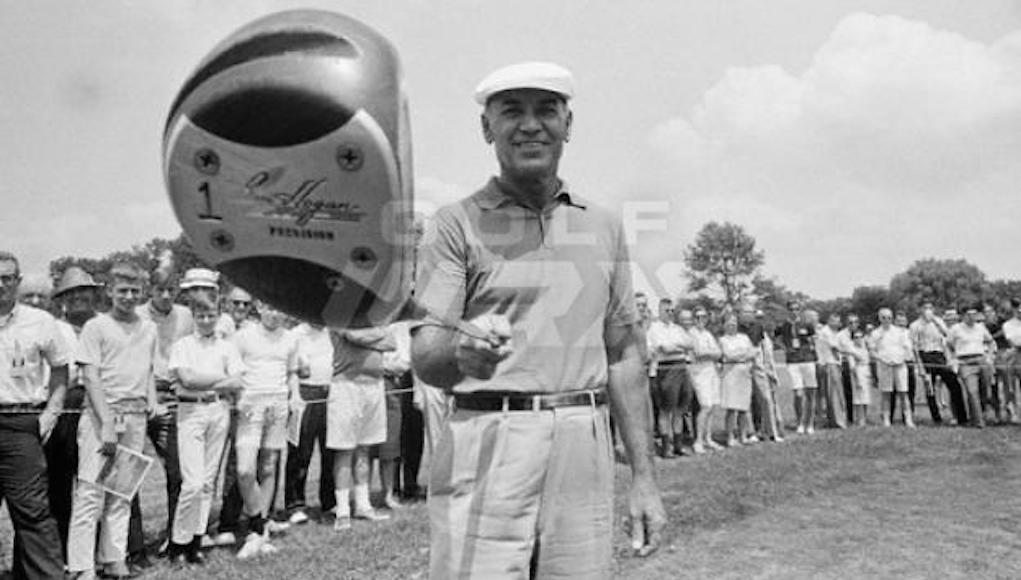
At one point in the early 1980s, Dan Pohl was the longest driver on the PGA Tour, averaging 274 yards with the Big Dog. As a teenage spectator watching from afar, I only became aware of him and his prodigious drives at the 1982 Masters. He tore up the back nine and managed to get into a playoff with Craig Stadler, the eventual winner. One thing I did pick up on was that he was using a “metal wood,” and the commentators were analyzing how much this ground-breaking new technology added to his length. I mean, a metal wood! It was the stuff of tomorrow; space-age cool!
This contradiction in terms (how can a wood be made of metal?) was offset by the results. Longer, straighter and more forgiving drives (see, the message hasn’t changed that much in nearly 35 years) resulted from this Pittsburgh Persimmon driver, as one brand so adeptly named it. The sheer audaciousness of this technological breakthrough!
It coincided with the advent of graphite shafts as well. Materials like boron and graphite were enabling club designers to make shafts lighter, stronger and longer, which in turn were delivering more distance with different ball flights. It must have been a golden time for golfing physicists and engineers. No longer were driver heads hand-carved out of blocks of persimmon. These hollow metal heads were designed on computers and cast in volume production lines with high yields and consistency. They offered strength and versatility. The marketing guys were shaping up for a field day. How could they lose?
Very quickly the golf shops filled up with these new metal woods. Persimmon had been around forever and still had its place for the purists, but once Ely Callaway got on board with his Big Bertha creation in 1991, we effectively waved goodbye to wooden-headed clubs forever.
I’d made my mind up that this was the future, so I set about as a 15-year-old aspiring golfer to acquire one. At that age it’s all about the shiny stuff, right? For the previous 12 months, I was learning the game with a Ben Hogan persimmon driver, my pride and joy. It was considered at the time “state of the art” with good quality persimmon and a fancy “speed slot.”
According to a Hogan ad, the slot was a “new and original idea to increase club head speed. This is not a theory, but a fact proven by a well-known physicist!” In terms of specs it said “1” on the sole; I had no idea what loft it was, only that it had a stiff shaft. I got it because it felt nice and I went off and learned how to hit it. The biggest modification I had was putting a new grip on it. The face of the club had four screws, and when you caught one the expression “hit it on the screws” became a very memorable feeling.
The Hogan stick was dropped quicker than a hot potato when I discovered metal. I soon managed to snag my first metal wood, a Titleist PT 9-degree driver from the second-hand bin in my local golf shop. I can’t remember exactly how much I paid for it, though; yes, it was that long ago. It had a steel shaft with a gleaming silver-and-grey color scheme. Man, that head was huge compared to my old Hogan. And from the day and hour I got the new metal driver, I never looked back to a wooden driver. I was sold. I was able to really wallop that thing, and over the next couple of years I nearly wore it out. I could even pick it off the fairway very successfully when my eye was in.
I quickly added a metal three wood — first from Titleist and then from Wilson Staff — and a metal five wood from Mizuno, which was an early predecessor to the hybrid. It had a small head and I was able to hit that thing from almost any lie. It had a gold boron shaft, too. To me, it was so high tech that it almost felt like cheating.
Over the years, I gamed the later offerings from Titleist as well as the latest clubs from TaylorMade, Callaway, Tour Edge, Cobra and Ping. I’ve tried most and make a point of keeping up to date with the latest technology. But how much more technical has it become? It’s interesting that Dan Pohl’s leading stats are now laughable compared with numbers of Tony Finau, who hits it an average of 314 yards per poke. That’s 40 yards folks!
There are now titanium heads, carbon heads, composite heads, face inserts, moveable weights, speed slots, and variable lofts and lies. Launch monitor technology has given us access to knowledge and a level of customization far beyond what we once knew. My specs from 20 years ago were “8.5 degrees with a stiff shaft.” Now I can print off a sheet that looks like it was generated by NASA highlighting my smash factor, spin rates, launch angles, ball speed and what I had for breakfast. A pro can now recommend the perfect club for me.
Over the last 10 years, the big buzz has been the spring-like effect known as Coefficient of Restitution (COR). Coupled with head size getting to space-hopper proportion, the authorities decided to step in to limit what was possible. So COR is now limited to 0.830 and the maximum club head size to 460 cubic centimeters in an attempt to “maintain the challenge of the game.”
It’s now all about materials science, manufacturing tolerances and optimizing shape for maximum speed. Scientists have access to nanomaterials that are used in aerospace construction. Callaway just co-designed their latest offering with help from Boeing! Moveable weight systems coupled with variable lofts and lies means we can tweak our drivers to our heart’s content if an effort to optimize a high-launch, low-spin, straight drive. We now also have our own custom colors and decals.
Imagine what our drivers will look like in 30 years! Oh, and then there is the “frigging golf ball”, as Jack so eloquently put it, but that’s a whole ‘nother rant!
- LIKE82
- LEGIT11
- WOW5
- LOL8
- IDHT4
- FLOP5
- OB1
- SHANK67
19th Hole
Vincenzi’s 2024 Zurich Classic of New Orleans betting preview

The PGA TOUR heads to New Orleans to play the 2023 Zurich Classic of New Orleans. In a welcome change from the usual stroke play, the Zurich Classic is a team event. On Thursday and Saturday, the teams play best ball, and on Friday and Sunday the teams play alternate shot.
TPC Louisiana is a par 72 that measures 7,425 yards. The course features some short par 4s and plenty of water and bunkers, which makes for a lot of exciting risk/reward scenarios for competitors. Pete Dye designed the course in 2004 specifically for the Zurich Classic, although the event didn’t make its debut until 2007 because of Hurricane Katrina.
Coming off of the Masters and a signature event in consecutive weeks, the field this week is a step down, and understandably so. Many of the world’s top players will be using this time to rest after a busy stretch.
However, there are some interesting teams this season with some stars making surprise appearances in the team event. Some notable teams include Patrick Cantlay and Xander Schauffele, Rory McIlroy and Shane Lowry, Collin Morikawa and Kurt Kitayama, Will Zalatoris and Sahith Theegala as well as a few Canadian teams, Nick Taylor and Adam Hadwin and Taylor Pendrith and Corey Conners.
Past Winners at TPC Louisiana
- 2023: Riley/Hardy (-30)
- 2022: Cantlay/Schauffele (-29)
- 2021: Leishman/Smith (-20)
- 2019: Palmer/Rahm (-26)
- 2018: Horschel/Piercy (-22)
- 2017: Blixt/Smith (-27)
2024 Zurich Classic of New Orleans Picks
Tom Hoge/Maverick McNealy +2500 (DraftKings)
Tom Hoge is coming off of a solid T18 finish at the RBC Heritage and finished T13 at last year’s Zurich Classic alongside Harris English.
This season, Hoge is having one of his best years on Tour in terms of Strokes Gained: Approach. In his last 24 rounds, the only player to top him on the category is Scottie Scheffler. Hoge has been solid on Pete Dye designs, ranking 28th in the field over his past 36 rounds.
McNealy is also having a solid season. He’s finished T6 at the Waste Management Phoenix Open and T9 at the PLAYERS Championship. He recently started working with world renowned swing coach, Butch Harmon, and its seemingly paid dividends in 2024.
Keith Mitchell/Joel Dahmen +4000 (DraftKings)
Keith Mitchell is having a fantastic season, finishing in the top-20 of five of his past seven starts on Tour. Most recently, Mitchell finished T14 at the Valero Texas Open and gained a whopping 6.0 strokes off the tee. He finished 6th at last year’s Zurich Classic.
Joel Dahmen is having a resurgent year and has been dialed in with his irons. He also has a T11 finish at the PLAYERS Championship at TPC Sawgrass which is another Pete Dye track. With Mitchell’s length and Dahmen’s ability to put it close with his short irons, the Mitchell/Dahmen combination will be dangerous this week.
Taylor Moore/Matt NeSmith +6500 (DraftKings)
Taylor Moore has quickly developed into one of the more consistent players on Tour. He’s finished in the top-20 in three of his past four starts, including a very impressive showing at The Masters, finishing T20. He’s also finished T4 at this event in consecutive seasons alongside Matt NeSmith.
NeSmith isn’t having a great 2024, but has seemed to elevate his game in this format. He finished T26 at Pete Dye’s TPC Sawgrass, which gives the 30-year-old something to build off of. NeSmith is also a great putter on Bermudagrass, which could help elevate Moore’s ball striking prowess.
- LIKE6
- LEGIT1
- WOW1
- LOL0
- IDHT0
- FLOP2
- OB1
- SHANK1
19th Hole
Vincenzi’s 2024 LIV Adelaide betting preview: Cam Smith ready for big week down under

After having four of the top twelve players on the leaderboard at The Masters, LIV Golf is set for their fifth event of the season: LIV Adelaide.
For both LIV fans and golf fans in Australia, LIV Adelaide is one of the most anticipated events of the year. With 35,000 people expected to attend each day of the tournament, the Grange Golf Club will be crawling with fans who are passionate about the sport of golf. The 12th hole, better known as “the watering hole”, is sure to have the rowdiest of the fans cheering after a long day of drinking some Leishman Lager.
The Grange Golf Club is a par-72 that measures 6,946 yards. The course features minimal resistance, as golfers went extremely low last season. In 2023, Talor Gooch shot consecutive rounds of 62 on Thursday and Friday, giving himself a gigantic cushion heading into championship Sunday. Things got tight for a while, but in the end, the Oklahoma State product was able to hold off The Crushers’ Anirban Lahiri for a three-shot victory.
The Four Aces won the team competition with the Range Goats finishing second.
*All Images Courtesy of LIV Golf*
Past Winners at LIV Adelaide
- 2023: Talor Gooch (-19)
Stat Leaders Through LIV Miami
Green in Regulation
- Richard Bland
- Jon Rahm
- Paul Casey
Fairways Hit
- Abraham Ancer
- Graeme McDowell
- Henrik Stenson
Driving Distance
- Bryson DeChambeau
- Joaquin Niemann
- Dean Burmester
Putting
- Cameron Smith
- Louis Oosthuizen
- Matt Jones
2024 LIV Adelaide Picks
Cameron Smith +1400 (DraftKings)
When I pulled up the odds for LIV Adelaide, I was more than a little surprised to see multiple golfers listed ahead of Cameron Smith on the betting board. A few starts ago, Cam finished runner-up at LIV Hong Kong, which is a golf course that absolutely suits his eye. Augusta National in another course that Smith could roll out of bed and finish in the top-ten at, and he did so two weeks ago at The Masters, finishing T6.
At Augusta, he gained strokes on the field on approach, off the tee (slightly), and of course, around the green and putting. Smith able to get in the mix at a major championship despite coming into the week feeling under the weather tells me that his game is once again rounding into form.
The Grange Golf Club is another course that undoubtedly suits the Australian. Smith is obviously incredibly comfortable playing in front of the Aussie faithful and has won three Australian PGA Championship’s. The course is very short and will allow Smith to play conservative off the tee, mitigating his most glaring weakness. With birdies available all over the golf course, there’s a chance the event turns into a putting contest, and there’s no one on the planet I’d rather have in one of those than Cam Smith.

Louis Oosthuizen +2200 (DraftKings)
Louis Oosthuizen has simply been one of the best players on LIV in the 2024 seas0n. The South African has finished in the top-10 on the LIV leaderboard in three of his five starts, with his best coming in Jeddah, where he finished T2. Perhaps more impressively, Oosthuizen finished T7 at LIV Miami, which took place at Doral’s “Blue Monster”, an absolutely massive golf course. Given that Louis is on the shorter side in terms of distance off the tee, his ability to play well in Miami shows how dialed he is with the irons this season.
In addition to the LIV finishes, Oosthuizen won back-to-back starts on the DP World Tour in December at the Alfred Dunhill Championship and the Mauritus Open. He also finished runner-up at the end of February in the International Series Oman. The 41-year-old has been one of the most consistent performers of 2024, regardless of tour.
For the season, Louis ranks 4th on LIV in birdies made, T9 in fairways hit and first in putting. He ranks 32nd in driving distance, but that won’t be an issue at this short course. Last season, he finished T11 at the event, but was in decent position going into the final round but fell back after shooting 70 while the rest of the field went low. This season, Oosthuizen comes into the event in peak form, and the course should be a perfect fit for his smooth swing and hot putter this week.

- LIKE10
- LEGIT2
- WOW0
- LOL0
- IDHT0
- FLOP0
- OB0
- SHANK0
Opinion & Analysis
The Wedge Guy: What really makes a wedge work? Part 1

Of all the clubs in our bags, wedges are almost always the simplest in construction and, therefore, the easiest to analyze what might make one work differently from another if you know what to look for.
Wedges are a lot less mysterious than drivers, of course, as the major brands are working with a lot of “pixie dust” inside these modern marvels. That’s carrying over more to irons now, with so many new models featuring internal multi-material technologies, and almost all of them having a “badge” or insert in the back to allow more complex graphics while hiding the actual distribution of mass.
But when it comes to wedges, most on the market today are still single pieces of molded steel, either cast or forged into that shape. So, if you look closely at where the mass is distributed, it’s pretty clear how that wedge is going to perform.
To start, because of their wider soles, the majority of the mass of almost any wedge is along the bottom third of the clubhead. So, the best wedge shots are always those hit between the 2nd and 5th grooves so that more mass is directly behind that impact. Elite tour professionals practice incessantly to learn to do that consistently, wearing out a spot about the size of a penny right there. If impact moves higher than that, the face is dramatically thinner, so smash factor is compromised significantly, which reduces the overall distance the ball will fly.
Every one of us, tour players included, knows that maddening shot that we feel a bit high on the face and it doesn’t go anywhere, it’s not your fault.
If your wedges show a wear pattern the size of a silver dollar, and centered above the 3rd or 4th groove, you are not getting anywhere near the same performance from shot to shot. Robot testing proves impact even two to three grooves higher in the face can cause distance loss of up to 35 to 55 feet with modern ‘tour design’ wedges.
In addition, as impact moves above the center of mass, the golf club principle of gear effect causes the ball to fly higher with less spin. Think of modern drivers for a minute. The “holy grail” of driving is high launch and low spin, and the driver engineers are pulling out all stops to get the mass as low in the clubhead as possible to optimize this combination.
Where is all the mass in your wedges? Low. So, disregarding the higher lofts, wedges “want” to launch the ball high with low spin – exactly the opposite of what good wedge play requires penetrating ball flight with high spin.
While almost all major brand wedges have begun putting a tiny bit more thickness in the top portion of the clubhead, conventional and modern ‘tour design’ wedges perform pretty much like they always have. Elite players learn to hit those crisp, spinny penetrating wedge shots by spending lots of practice time learning to consistently make contact low in the face.
So, what about grooves and face texture?
Grooves on any club can only do so much, and no one has any material advantage here. The USGA tightly defines what we manufacturers can do with grooves and face texture, and modern manufacturing techniques allow all of us to push those limits ever closer. And we all do. End of story.
Then there’s the topic of bounce and grinds, the most complex and confusing part of the wedge formula. Many top brands offer a complex array of sole configurations, all of them admittedly specialized to a particular kind of lie or turf conditions, and/or a particular divot pattern.
But if you don’t play the same turf all the time, and make the same size divot on every swing, how would you ever figure this out?
The only way is to take any wedge you are considering and play it a few rounds, hitting all the shots you face and observing the results. There’s simply no other way.
So, hopefully this will inspire a lively conversation in our comments section, and I’ll chime in to answer any questions you might have.
And next week, I’ll dive into the rest of the wedge formula. Yes, shafts, grips and specifications are essential, too.
- LIKE30
- LEGIT7
- WOW1
- LOL1
- IDHT2
- FLOP3
- OB1
- SHANK3
-

 19th Hole2 weeks ago
19th Hole2 weeks agoDave Portnoy places monstrous outright bet for the 2024 Masters
-

 19th Hole2 weeks ago
19th Hole2 weeks agoTiger Woods arrives at 2024 Masters equipped with a putter that may surprise you
-

 19th Hole14 hours ago
19th Hole14 hours ago‘Absolutely crazy’ – Major champ lays into Patrick Cantlay over his decision on final hole of RBC Heritage
-

 19th Hole3 weeks ago
19th Hole3 weeks agoReport: Tiger Woods has ‘eliminated sex’ in preparation for the 2024 Masters
-

 19th Hole1 week ago
19th Hole1 week agoTwo star names reportedly blanked Jon Rahm all week at the Masters
-

 19th Hole7 days ago
19th Hole7 days agoReport: LIV Golf identifies latest star name they hope to sign to breakaway tour
-

 19th Hole1 week ago
19th Hole1 week agoNeal Shipley presser ends in awkward fashion after reporter claims Tiger handed him note on 8th fairway
-

 19th Hole6 days ago
19th Hole6 days agoBrandel Chamblee has ‘no doubt’ who started the McIlroy/LIV rumor and why



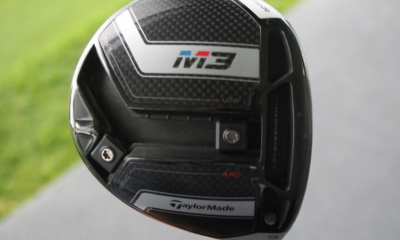

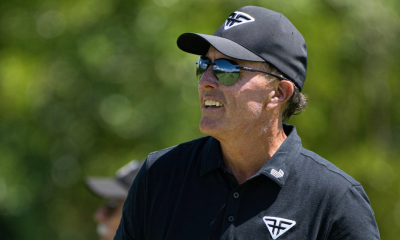



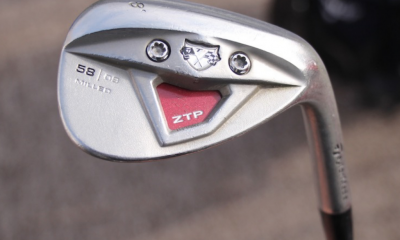

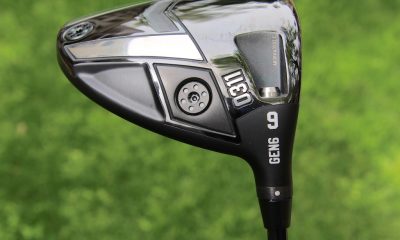

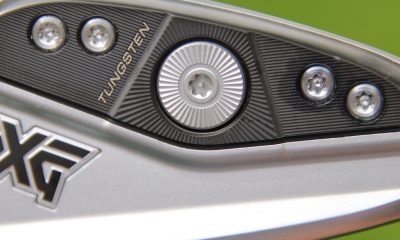













Christosterone
Sep 1, 2016 at 3:08 pm
This:
http://www.persimmongolfclubs.com/acatalog/JOE-ANDERSON-DISPLAY-CLUB.jpg
Wm
Aug 27, 2016 at 10:31 am
In the not too distant future they will be marketing customized one piece drivers where the head will be fused to the shaft. The marketers will claim more stability and better feel.
RAT
Aug 26, 2016 at 10:15 am
They should take the gloves off and let it be NO LIMITS on balls and clubs !
Tim
Aug 26, 2016 at 12:54 am
I would bet there are still some big changes coming the the shafts. They are going to give us shafts that flex and kick straight as the club face with tips that stay on line no matter how fast or had you hit the ball. I would bet we may even see shafts that have some kind of adjust ability for the amateur golfer to play around with…and then there will be lots of grip advancements with adjust ability in them also….lots of things to work on for the OEM’s to keep us buying the next hot new gimmick.
Chuck
Aug 25, 2016 at 9:49 pm
Others have already mentioned it; I am not so sure that the difference between a 2016 driver and a 2046 driver will be so dramatic, as the difference between a 1980 driver and a 2010 driver.
Just think about it; for 30 years — more, actually — tournament/tour golf saw virtually NO change in drivers. In the 1970’s and 80’s, the absolute rage among tour players and elite amateurs was to find very pure MacGregor drivers designed by player/designer Toney Penna from the 1950’s. Just about every major championship in golf for four decades was won with a persimmon driver that was generally about 20 years old. Jack Nicklaus was winning majors in the 1970’s with a 3-wood from the 1950’s. Players used to say that it was harder to find a good driver than it was to find a good wife. And once they found a gamer, they played with it until it broke. Then they got it repaired. And only after a club broke about three more times would they ever give up on it.
J.B.
Aug 25, 2016 at 8:09 pm
Materials since will dictate the future of clubs. With additive manufacturing, the face will be a graduated blend of materials to optimize the sweet spot to make the entire face respond at the edge of the rules. Clubs will stop being a head and a shaft, rather a single piece. The single piece clubs will be so well weighted and aero optimized that grandma will be showing 95+ mph swing speeds.
Professor smizzle
Aug 26, 2016 at 11:06 am
This man knows^^^^
The future is not development of the head, but of an entire one piece club optimised for each player.
mhendon
Aug 25, 2016 at 3:13 pm
I doubt I’ll be alive 30 years from now much less still playing.
Justin
Aug 25, 2016 at 1:22 pm
Technology is allowing more players to play the game effectively. I truly believe that more golfers could have competed on tour back in the day had the technology been better. The technology helps the bombers hit it straighter and helps everyone catch up to the pure ball strikers.
Id be happy if everything stayed the way it was. I can deal with guys like Justin Thomas carrying the ball 300+ yards in the air, but when you have 50+ guys on tour start to carry it the distance that Dustin, Bubba, and Rory do now…. that’s when we need to worry.
dsd
Aug 25, 2016 at 12:50 pm
just remember in the 200 years prior to the last 30 years club tech remained relatively unchanged. Similar to any industrial revolution, I don’t expect leaps and bounds of improvements over and over again.
Bruce Ferguson
Aug 25, 2016 at 12:44 pm
I would love to see new designs which would incorporate the dispersion/distance characteristics of today’s 460cc driver in a 360-400cc head. Whatever the future has in store, please don’t let it be even larger driver heads!
Tom
Aug 25, 2016 at 7:47 pm
M2 3 wood
Jnak97
Aug 27, 2016 at 1:08 am
Aeroburner mini driver
alfriday
Aug 25, 2016 at 12:41 pm
The last thirty or so years have been a transformative period in driver tech. I doubt the next thirty will go through anything nearly as drastic. The size of drivers has been limited. The spring effect has been limited. Newer, more exotic materials are available, but most are cost prohibitive. As companies push the envelop on the set performance limits, the changes will by necessity be less drastic.
The Real Swanson
Aug 25, 2016 at 12:39 pm
“Imagine what clubs looked like 30 years ago.” would be a more appropriate title.
Johnnylongballz
Aug 25, 2016 at 12:09 pm
Hopefully they don’t look that much different than today’s drivers. I hope that the USGA/R&A can limit technology’s impact on the game, maybe even roll it back a bit.
KJ
Aug 25, 2016 at 5:32 pm
C’mon now. Manufacturers are always going to be looking for something new, something different. It happens in every single industry with all products, Its called capitalism and the chase for the almighty dollar.